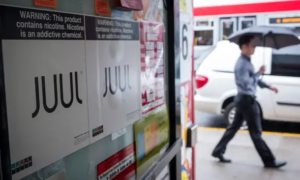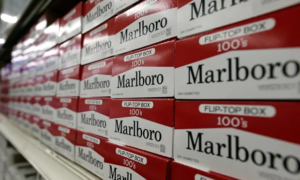Intersectionality And The Movement To End The War On Drugs

2020 marked the 50th anniversary of the so-called War on Drugs
Author: Janve Sobers
The year 2020 marked the 50th anniversary of the so-called War on Drugs. As states across the country decriminalize and commercialize legal cannabis, some have declared drugs the winner of the Drug War. There is some truth to this assessment. Two-thirds of Americans currently support decriminalizing marijuana, now referred to by its less racialized, scientific name, cannabis. However, most scholars and activists agree, the Drug War is far from over.
The War on Drugs officially began during the Nixon administration with the Comprehensive Drug Abuse Prevention and Control Act of 1970. A top Nixon aid notoriously admitted the War on Drugs served primarily to eliminate leftist political opposition by criminalizing anti-war activist groups and grassroots members of the Civil Rights Movement. Communities of color became targets for militarized policing and disproportionate enforcement of prohibition policy. The War on Drugs began a new kind of structural racism, in the form of mass incarceration, deepening cyclical poverty, and the erosion of civil liberties in favor of empowering law enforcement.
The Drug War led to a series of Supreme Court cases that eroded Americans’ Fourth Amendment right to be free of unlawful search and seizure.[i] Possession of a controlled substance became a strict liability crime and a justification for law enforcement abuses of power disproportionately targeting black communities.[ii] Black people are five times more likely to be arrested for drug possession than white people.[iii] Researchers in 2009 estimated that if the trend of mass incarceration had not occurred, the poverty rate would be 20% lower, and 5 million fewer people would have fallen below the poverty line.[iv] Incarceration dramatically alters the family structure, increasing the number of single-parent households and decreasing marriage rates.[v] Meanwhile, prisons have become a multibillion-dollar industry. Thus, contrary to the tongue-in-cheek declaration that drugs won the Drug War, the US criminal industrial complex is the true victor. And black and brown communities are the vanquished. Michelle Alexander has called this present era the New Jim Crow.[vi] And like Jim Crow laws, prohibition both feeds the criminal legal system, and fuels discrimination in education, social welfare, health care, and child welfare.
Nationwide, legal cannabis is a $17.5 billion industry and growing exponentially. With new federal legalization bills on the table, and over half of the states now allowing some form of legal cannabis sales, communities and scholars have begun the work of measuring, unpacking, and dismantling the Drug War. Such efforts usually focus on decriminalization, reparations for the formerly incarcerated, and community reinvestment for areas subject to disproportionate law enforcement. However, cops and prosecutors aren’t the only sources for criminalization. Criminalization also occurs in child welfare and dependency courts, the public education system, health care, and housing. These systems disproportionately impact black women, youth, and children. The criminalization of black women and children thus occurs at the fringes of our legal system, where due process is merely a box checked by an agency rather than a substantive legal right.
In this way, cannabis prohibition criminalizes black women and families intersectionally. Intersectionality is a legal theory founded in the late 80s by Kimberle Crenshaw. The theory posits that people with multiple marginalized identities experience discrimination at the intersection of those identities. Crenshaw originally examined three cases in which the legal system failed to recognize discrimination against black women because the system only recognizes either gender or race-based discrimination, not both at once. Similarly, cannabis prohibition targets black women based on both their race and their gender. For example, black mothers have historically experienced criminal prosecution for prenatal drug exposure (this is where we get the term “crack baby”).[vii] To this day, mothers who use cannabis can lose their parental rights. Displacement into the foster care system is an inherently traumatizing experience for children. Congresswoman Karen Bass, the founder of the Congressional Caucus on Foster Youth, once stated that “the consequences of [War on Drugs] policies for families was a massive increase in the number of children placed in foster care because of parental drug use.” Moreover, public schools in California can still suspend and expel youth for cannabis possession, often derailing their future educational opportunities with a marred record. Schools might even involve child protective services, leading to displacement into foster care and juvenile probation systems. Cannabis prohibition also impacts equity in access to medical care, public housing, and public benefits, in unseen and unquantified ways.
The movement to end the War on Drugs has successfully brought an end to prohibition in most states, decriminalizing cannabis and allowing for legal cannabis sales. But there is obviously more to be done. We must end the criminalization of black women and families in child welfare, education, housing, and health care. We must be mindful of intersectionality in our movement to end the War on Drugs.
Source: Canna Law Blog








































